#woodcut wednesday
Text

"Seriously? You're going to interrupt me? I just got to the good part!"
Woodcut found in Liber chronicarum (1493).
#woodcuts#rare books#rare book illustration#incunable#incunabula#history#middle ages#books#library humor#woodcut wednesday#othmeralia
157 notes
·
View notes
Photo
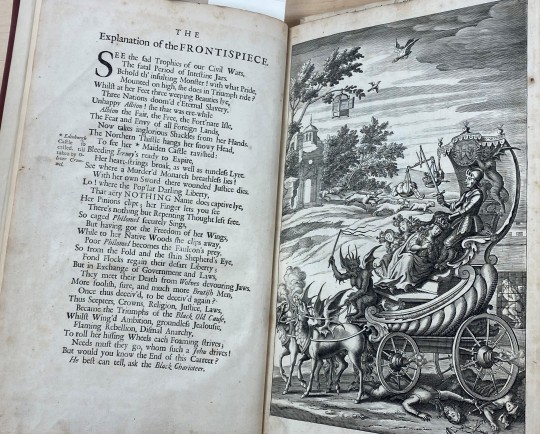
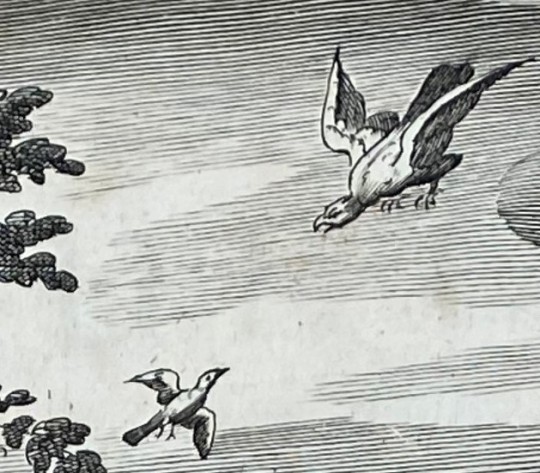
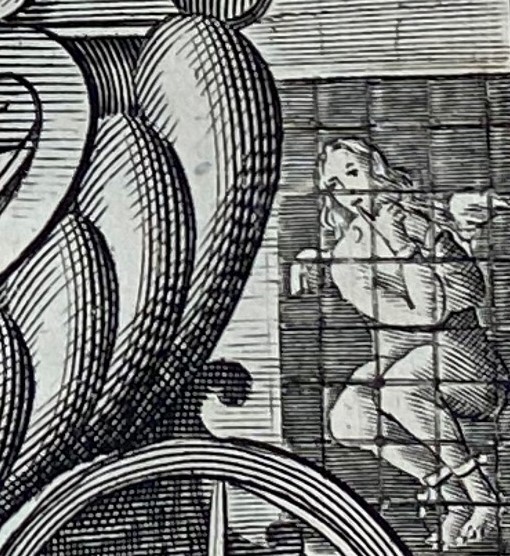
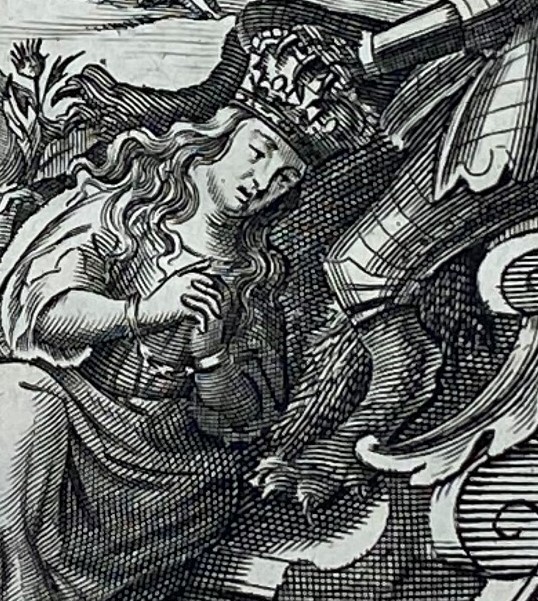

The more I look at this frontispiece (from this 1684 account of the trial of King Charles I), the more the White Lotus Season 2 opening theme song intensifies in my head.
#riesenfeld center#rare books#old books#special collections#law library#legal history#treason#king charles i#trial accounts#17th century#1600s#illustrations#frontispiece#art#symbolism#english civil war#white lotus#woodcut wednesday
82 notes
·
View notes
Photo


Woodcut Wednesday: I is for Iter
Coincidence? We wonder if this 16th century woodcut initial letter I might illustrate an iter, Latin for journey.
Philonis Iudaei Alexandrini Libri : Antiquitatum ; Quaestionum et solutionum in Genesin ; De essaeis ; De nominibus Hebraicis ; De mundo. Basileae : Per Adamum Petrum, 1527.
#woodcut wednesday#letter i#bookhistory#rarebooks#16th century#woodcut initials#historiated initials
47 notes
·
View notes
Text
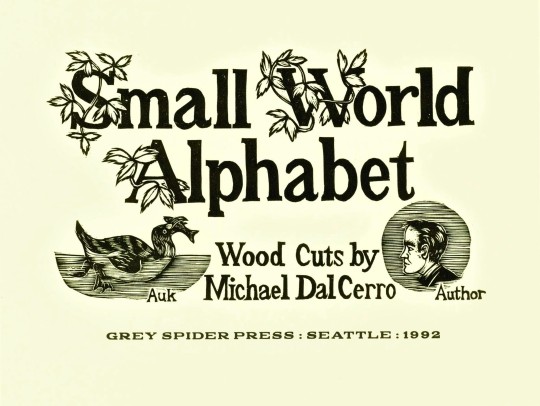








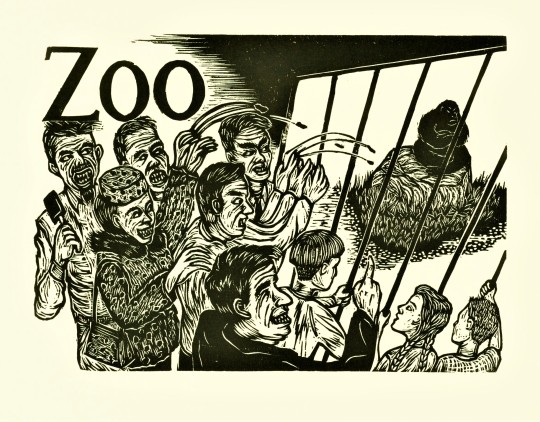
Wood Engraving Wednesday
This week we take small departure from wood engraving into the world of the wood cut (wood engravings are made with engraving tools on the end grain of a hardwood, while wood cuts use carving tools on the long grain of usually softer woods). New Jersey wood cut artist Michael Dal Cerro (b. 1953) recently donated his 1992 artists book Small World Alphabet, printed by Chris Stern (1951-2007) at his Grey Spider Press in Seattle, Washington in a limited edition of 75 copies signed by the artist, to UWM Special Collections.
The book is an abecedarium illustrating the outsized impact our species has had on our small blue planet. We were so taken by Dal Cerro's pointedly satirical graphics that we thought we'd showcase some of the prints on this day usually reserved for wood engravings.
View more posts with woodcuts.
View more posts with wood engravings!
#Wood Engraving Wednesday#woodcuts#Michael Dal Cerro#woodcut artists#Small World Alphabet#abecederia#abecedarium#Chris Stern#Grey Spider Press#fine press books#fine press printing#environmentalism#satire
168 notes
·
View notes
Photo

#WordyWednesday
Printing: A term used to refer to the mechanical production of text or images. The word “printing” is derived from words meaning “impression,” referring to the shapes made by seals or stamps on clay or wax. Most forms of printing are a variation on the following procedure: ink or paint is applied to a three-dimensional pattern, which is then pressed against the material intended to be printed. Through contact and pressure, the ink is then transferred to the material, after which point, more ink can be applied to the pattern so that it can be transferred to a new piece of material. The cultural impact of widespread printing is hard to overstate as it allowed the mass production of books and other written materials, turning what had been an expensive luxury good into a cheap commodity.
Image: Garzoni, Tomaso, 1549?-1589. Piazza universale, das ist, Allegemeiner Schawplatz, Marckt, vnd Zusammenkunfft aller Professionen, Kunsten, Geschafften, Handeln, vnd Handtwercken. Frankfurt am Main: In Verlag Matthaei Merians Sel. Erben, Druckts Hieronymus Polich vnd Nicolaus Kuchenbecker, 1659. GT5780 .G315 1659
(via Page — Pulpboard · Rare Books: A Glossary · Special Collections and Archives)
#wordy wednesday#wordywednesday#john henry#special collections#specialcollections#rare books#rarebooks#bookhistory#printing history#illustration#printing#printing press#woodcut
15 notes
·
View notes
Text
Chapter 1:

This is a snippet from an original work of mine. Happy holidays to all that celebrate them, and yes I am aware that the magical school existing along side non magical people has been done a million times 😅
Taglist: @vvkingofgaybisciutsvv @thequeenofthewinter @thedevilshardy @mollybegger-blog @wandawiccan60 @cameleonhardyfan63 @inkwolvesandcoffee @liliac-dreamer @potter-solomons
"Do we have Harlequin's mom for DLL?" Violet asked, crossing her legs. "No, it's a substitute. Mrs. Faith is still on maternity leave." Indigo answered. "Well," Violet sniggered, "I guess she did just have nine pups. Werewolves always have a gazillion kids." Indigo nodded in agreement, "let's just hope this substitute has enough aptitude for Dead Language Literature. He's young from what I've been told." He said. Violet scrunched her features together, "Young? How young?" She questioned. "Demonic lineage, no one knows for sure." Indigo explained. Violet poked out her bottom lip and moved her eyebrows up and down, indicating that her brother's answer wasn't as bad as she expected it to be. The demonic had a custom of only speaking their literal age amongst themselves. For those outside of their culture, they were young, middle-aged, old. consenting, and nonconsenting for those seeking more.. intimate relationships. "Hopefully, young means not a literal demonic child." Violet deadpaned. "That's rude." Indigo countered. "And what are you supposed to be then?" Violet shot back. Indigo shook his head with a sigh.
#hope you enjoy#wip wednesday#wip wip wip#fanfiction#this is a little different#original story#original characters#the woodcut twins
3 notes
·
View notes
Text
Upcoming Exhibit and Lecture: Illustrating the Renaissance Book: From Illumination to Woodcut
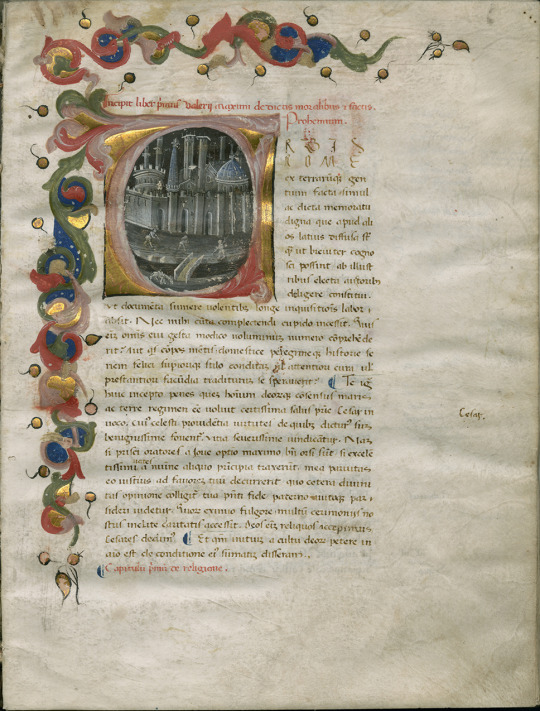
Valerius Maximus (1st c. AD). Factorum ac dictorum memorabilium libri IX. Italy. 15th c. Parchment,126 fols. Fol. 5r

Full-page illumination from Carta Executoria de hidalguia de sangre a pedimento de Don Juan de Mansilla como curador de Doña Francisca de Mansilla, hija de Baltasar de Mansilla, vecinos de la villa de Aranda de Duero. Valladolid, 1636 Parchment, 93 fols. Fol. 2r

Full-page woodcut depicting the procession of Priapus, the Greek god of animal and vegetable fertility. Hypnerotomachie, ou Discours du songe de Poliphile Ed: Jean Martin Paris: Jean le Blanc for Jacques Kerver, 1561 Fol. 69r. Loan courtesy of William P. Heidrich
Come explore a selection of manuscripts and early printed books from the 15th to the 17th centuries that were illustrated with illuminations and woodcuts! The display will be up in the Hatcher Gallery Exhibit Room from 6 September to 14 December.
And join us on Wednesday 13 September at 4p in the Hatcher Gallery event space or on zoom a for lecture based on the exhibit.
We hope to see you there!
#events#exhibits#special collections#special collections libraries#libraries#archives#libraries and archives#special collections and archives#manuscripts#manuscript culture#early printed books#book illustrations#illustrated books#illustrations#illumination#illuminated manuscripts#manuscript illumination#woodcuts
87 notes
·
View notes
Text
Untitled Wednesday Library Series, Part 110
Depending on the week, anywhere between fifteen and fifty percent of my job is tracking down and organizing PDFs for other people. The problem with coming home tired from a searching-for-PDFs job and launching straight into searching-for-PDFs homework in preparation for doing research about how to better search for PDFs is that I seldom get the chance to track down or organize any for myself.
A recent exception: James Page’s Guide for Drawing the Acanthus, and Every Description of Ornamental Foliage in its 1886 reprint by Bernard Quaritch. Rather than slap in scans of the (blank) covers, I'll lead off with the title page and frontispiece. If you want to follow along, here's a version hosted on the Internet Archive.

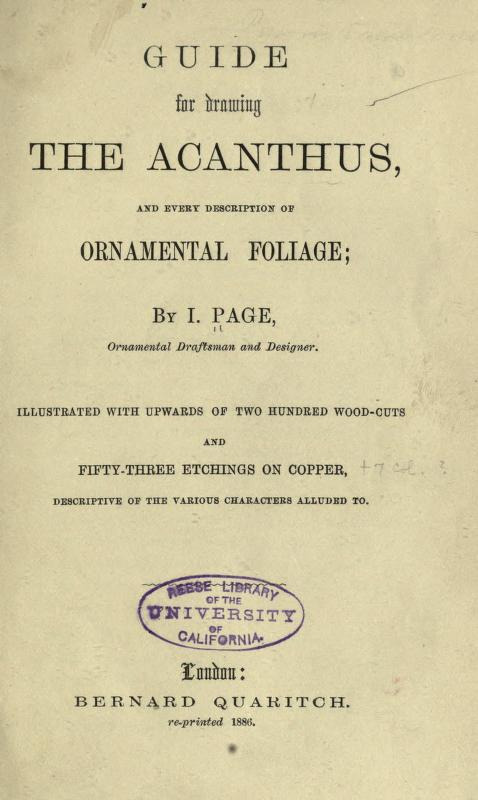
The How
Because I’m up to my tits in end-of-term bustle, I’ve had no time to work on anything of my own lately. Hell, I haven’t even been able to scheme or plot in earnest. This is, I trust you’ll understand, quite frustrating. The best substitute I can afford is reading about the kinds of things I’d be reading if I were to be planning something serious, which usually, I trust you’ll recognize, means forums. This item came to my attention via a thread on The Engraver’s Cafe, which is a place I have no business being but still scavenge for references when the mood strikes.
The Text
A reference, but not as advertised — this isn't especially a guide, nor is it only about ornamental foliage. It is somewhat those things, but spends a whole lot of its runtime dealing with other sorts of architectural ornamentation.
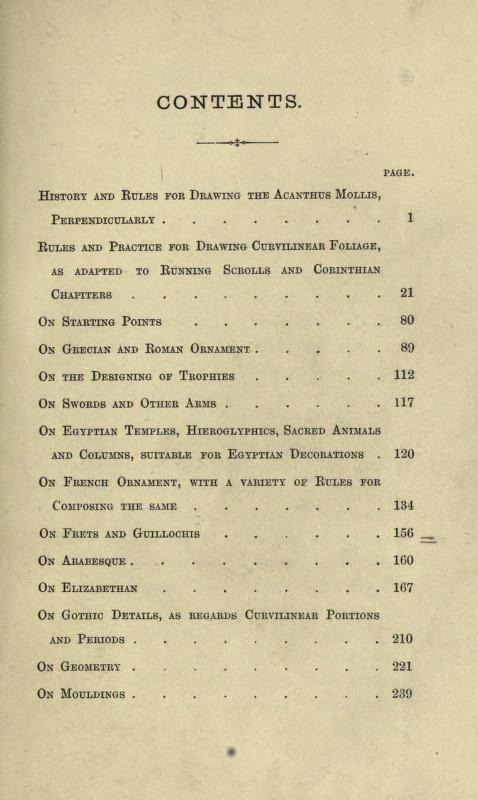
Neat, yes? Sort of. Mr. Page's focus being more diffuse than advertised is at minimum (to me, in my opinion, for my purposes, etc.) quite frustrating. More realistically, it's a fucking chore. His prose is...

...well, it's ornamented. Some of that ornament is to be expected for a text of this vintage and pedigree. Not all of it, though.
I should be more charitable. Page uses all this as a cushion for 'upwards of two hundred wood-cuts' (some in color!) and 53 copperplate engravings, all of which are his own. He also, so far as I can tell, printed all of the same for the first edition of this book. This is, at minimum, tremendous. For its purposes, the explanations (however generously so called) are mostly sufficient.
The Object
I can't speak to the printing and binding work, but I can admire the woodcuts and engraving. With the magic of portably formatted documents (via PNGs, anyway), you can too!



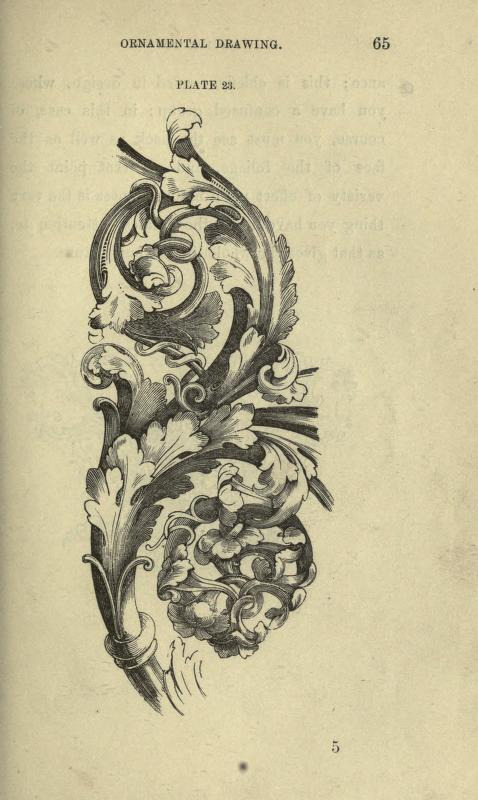
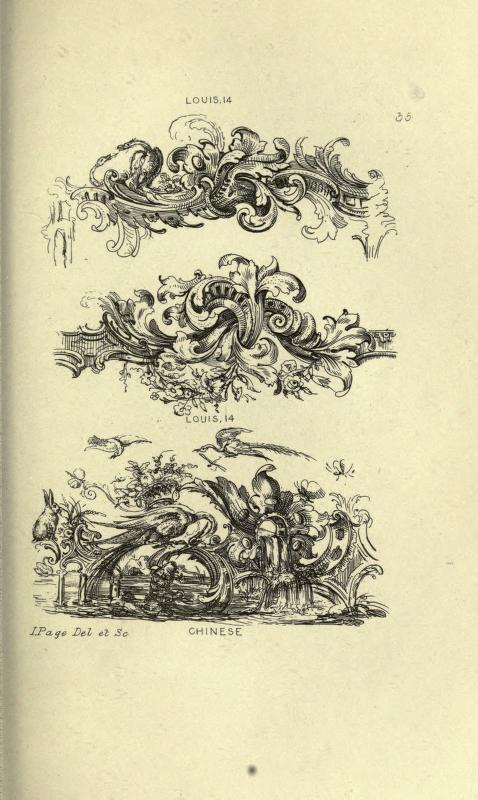
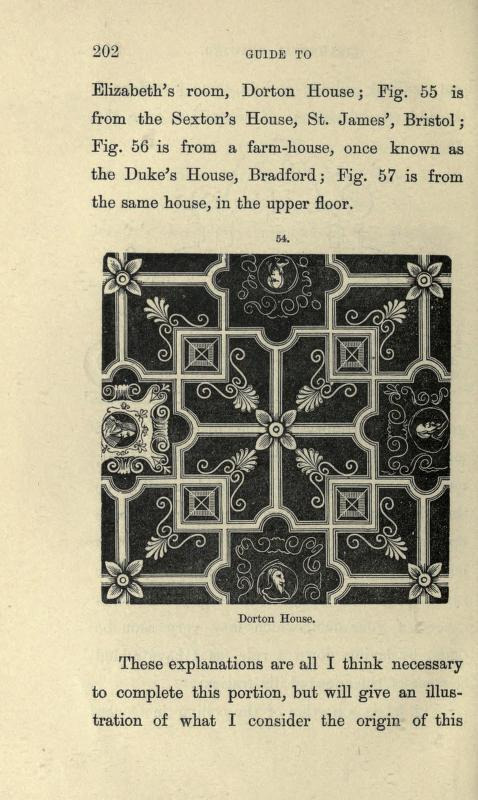

Nothing here is a masterwork, strictly speaking, but everything is at least an order of magnitude better than it needs to be for a book like this. This is a stunt, and an impressive one. The fact it doesn't stick the landing shouldn't convince you otherwise.
The Why, Though?
Most of my interest in this is engraving-flavored. While this is a book put together by engraving, it is not a book about engraving, not even really about drawing for engravings. The aim here is mostly architectural — design components for columns, molding, trophies, friezes, etc. — with a heavy helping of selling readers on the currency of Page's style and approach to teaching it. I care neither about nor for that stuff.
If you're willing to squint, there's plenty else to take home. This is a worse history of the acanthus in ornament than, say, this blog post by a living ornamental painter, and a worse visual reference than, for example, this Grammar of Ornament from the same publisher. For my purposes, though, this offers a decent couple dozen schematics to use while learning relatively simple motifs.
Lots of the linework and structural concepts exhibited translate in subtle and interesting ways to more modern styles of scrollwork (both engraved and especially tattooed), which seems like magic to me. One benefit of having no training or experience whatsoever is that even the fundamentals seem like cool secret knowledge.
58 notes
·
View notes
Text
WIP Wednesday
Wait, have I started a fanfiction of @alex51324 's Island of Gays fanfic with some inspiration from @bitletsanddrabbles fanfic of that fanfic? Is this fanfic of a fanfic of a fanfic too meta?
“It’s very nice, but I don’t think any of us know the first thing about engraving.” Thomas said.
The copperplate press was far simpler than the letterpress in design, you just passed the inked plate and paper through two rollers, hand operated via a large wheel, but when it came to engraving the plates, Thomas was at a loss. He knew it had something to do with acid but that sounded dangerous.
“It’s quite all right, Victor did an apprenticeship with an engraver.” Lord Hexham replied. “I’m sure we’ll figure it out. Of course, you can adjust the rollers if you want to keep doing woodcuts,” he continued. “And you can use this photoreactive emulsion to make engraving plates of photographs which brings me to our next piece of equipment.” He pulled a kodak box camera from a desk drawer and handed it to Gordon.
“Phwoar, look at that!” the boy said.
“And this little room is where you’ll develop the film.” the Marquess said, opening a door to reveal a darkroom. It was more of a cupboard really but the red light bulb made it look very professional.
“You know, we could set up a photography studio for the island. We have the equipment, we might as well monetise it. We could develop film for people with cameras and have a space for people to get their picture taken to send back to their families, or to give to their sweethearts.” Richard offered and Thomas was reminded again of why he had asked the other man to manage the business side of things. Something like that would never have occurred to him.
“Yeah, saucy photographs I’ll bet.” Gordon said as he immediately figured out how to use the shutter and started snapping pictures in Thomas’s direction. Young people were always so quick with technology.
“We could do wedding photography!” Kit suggested.
“I’m not sure if it's wise having photographic evidence of that.” Thomas said, “And does anyone even know how to develop photographs?”
“I can.” Lord Hexham said, “I thought I could teach young Terrence here how to do it. He certainly seems interested.” he said as Gordon continued taking snapshots of them.
“Will you stop that! Camera film doesn’t grow on trees, you know.” Thomas snapped at the lad. He must have got through an entire roll already.
“I’m learning!” Gordon said rolling his eyes and snapping another picture, “You’re always saying I’m not pulling my weight around here, this could be my new job.”
“All right... but if you continue to waste materials they’re coming out of your wages, and if you even think about taking a picture of your arse, you are fired. Do you understand?” Thomas said sternly.
“What about my cock?” Gordon said sarcastically.
Thomas sighed. Terrence Gordon had settled down, somewhat, in the past year but he could still swing wildly between needless aggression and being sexually inappropriate, particularly when he felt threatened. Frank Rouse had once told him, perhaps a little pointedly, that those were common symptoms in abused children. Thomas had shot back that it didn’t take a degree in medicine to figure that out.
15 notes
·
View notes
Text

W is for Wednesday woodcut
From: Geddes, Michael, 1650?-1713. Several tracts against popery. London : Printed by E.J. for B. Barker and C. King, 1715
#woodcut#capitalletter#initialcapital#letter#letterw#w#1710s#early18thcentury#english#woodcutwednesday#rarebooks#specialcollections#libraryofva
161 notes
·
View notes
Text
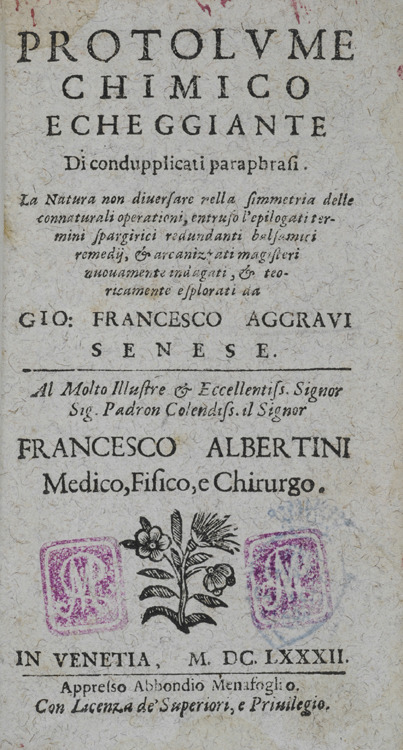
Protolume chimico e cheggiante di condupplicati paraphrasi (1682) by Giovanni Francesco Aggravi.
This book is part of our Neville Collection which was purchased from Roy G. Neville. This is a first edition Venetian copy, 12mo. 6 leaves, and woodcut printer's ornament on the title page. It is bound in contemporary vellum with old ink lettering on spine.
Nothing seems to be known of the author, Giovanni Francesco Aggravi (if you know information that might help, let us know! He's most likely from the 17th century). The first half of this book covers chemical apparatus, operations, and process, with the second half focusing on an alphabetical list of preparations of chemicals, mainly for pharmaceutical uses.
#rare books#old books#neville collection#title page tuesday#title page#rare book alert#printers device#woodcuts#woodcut wednesday#woodcut#early printing#othmeralia
18 notes
·
View notes
Photo

This dragon seems ready to bite a piece off of the letter Q.
It’s all about dragons and unicorns at the Riesenfeld Center this week, simply because this book of Canon law features so many.
#woodcut wednesday#woodcut initial#canon law#english law#gothic type#dragon#dragons#historiated initial#16th century#old books#rare books#riesenfeld#riesenfeld center#umn law#law library#magical creatures
186 notes
·
View notes
Photo

Woodcut Wednesday: Watch it with that!
What would this winged fellow need with a knife? We must assume he used it in the construction of the big letter L.
Woodcut initial in the 1516 Greek New Testament by Erasmus.
Erasmus, Desiderius (ed.). Novum instrumentu[m] omne. [Basileae, in aedibus Ioannis Frobenii, 1516]
46 notes
·
View notes
Text

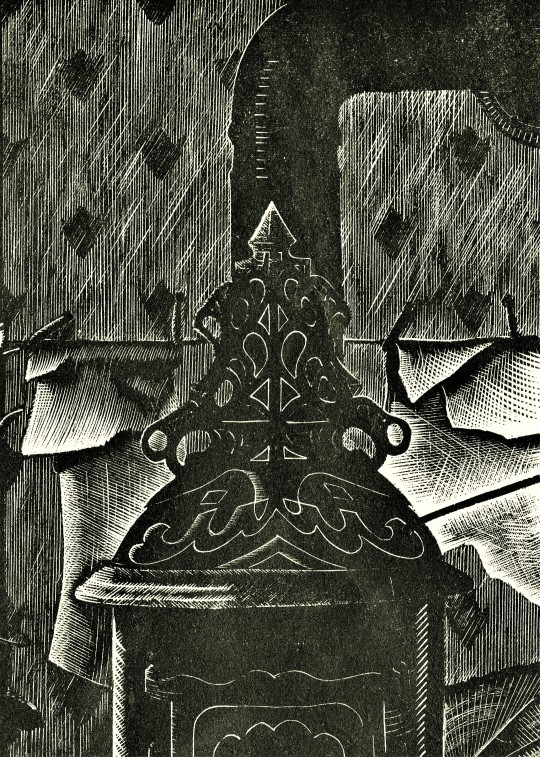
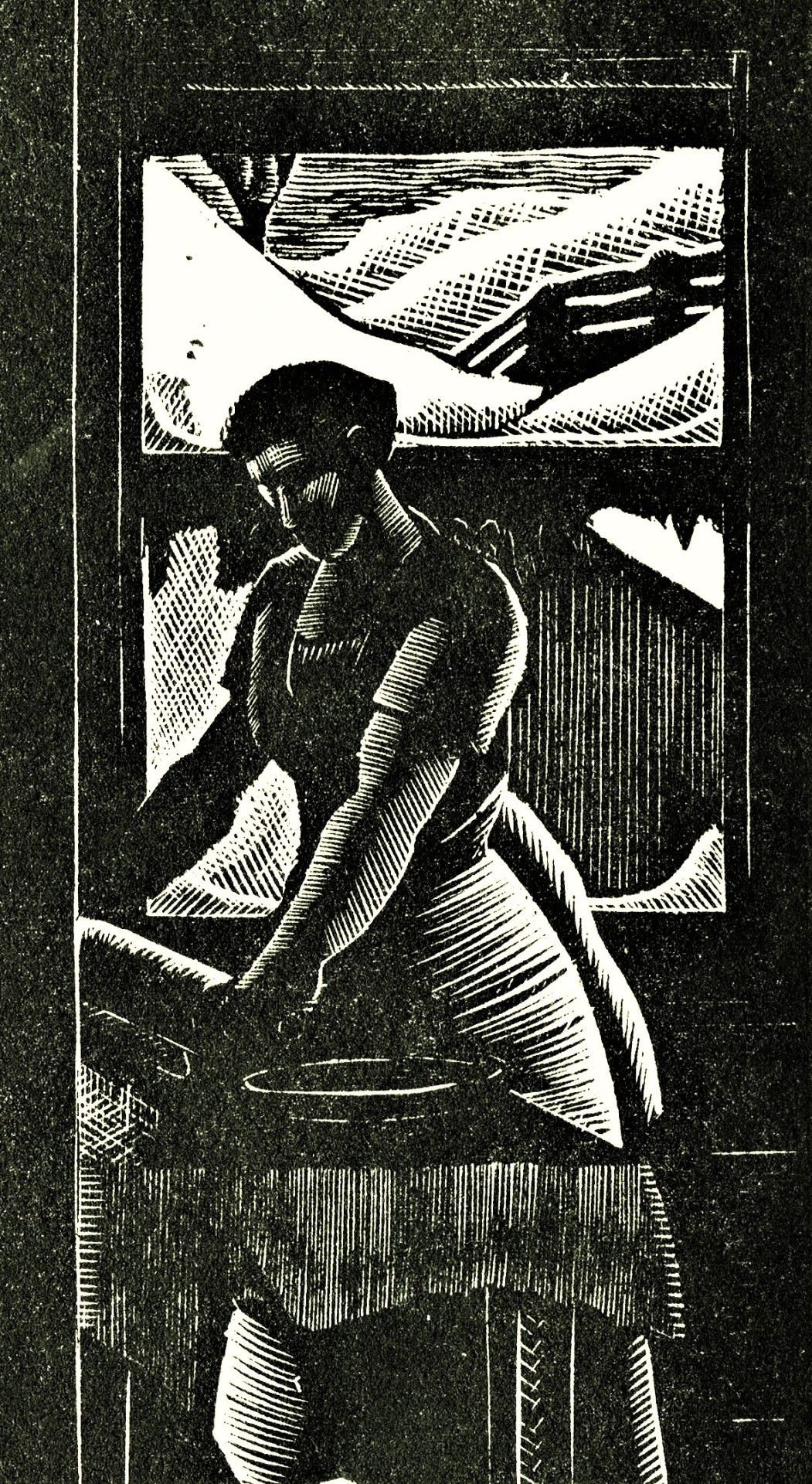




Wood Engraving Wednesday
FRANK UTPATEL
On this last Wednesday in May we present a wood engraving entitled Farmer's Holiday #4 by the noted Wisconsin artist Frank Utpatel (1905-1980). Utpatel made this engraving in the late 1930s as a Wisconsin artist in the Federal Art Project of the WPA. He is remembered mainly as an illustrator of fantasy, horror, and science fiction stories, especially through his longtime collaboration with August Derleth who founded the Arkham House publishing firm in Sauk City, Wisconsin, a major publisher in this genre, especially the works of H. P. Lovecraft. Although he is remembered for his work as an illustrator, he was also a highly accomplished wood engraver.
This print was scanned as part of our digital collection Wisconsin Arts Projects of the WPA from a portfolio of original prints in Special Collections that bears the title Making a Woodcut, although most to of the prints stored here are mainly lithographs, etchings, and linocuts.
The Wisconsin Arts Projects of the WPA digital collection was made possible with generous financial support from The Chipstone Foundation.
View more posts with Frank Utpatel's wood engravings.
View more posts from our Wisconsin Arts Projects digital collection.
View more posts with wood engravings!
#Wood Engraving Wednesday#wood engravings#wood engravers#Wisconsin artists#Frank Utpatel#Farmer's Holiday#Federal Art Project#Works Progress Administration#Making a Woodcut#Wisconsin Arts Projects of the WPA#digital collections
83 notes
·
View notes
Text
A Plutarchian Woodcut Wednesday
We’re spending our Woodcut Wednesday with this stunning sixteenth-century edition of Plutarch’s classic Parallel Lives featuring the work of artists Jost Amman and Tobias Stimmer.

The allegory of Fama, otherwise known as Fame or Renown, by Tobias Stimmer opens Plutarch’s Parallel Lives on the title page.

Various scenes from the life of the legendary Athenian monarch Theseus, including the hunt of the Calydonian boar and the hero throwing Sciron off a cliff edge. Plutarch pairs the Greek Theseus with the Roman Romulus.

The founding of the city of Rome under Romulus. The murder depicted in the foreground could be Romulus slaying Remus in the dispute over where Rome ought to be built.
Plutarch (ca. 46-after 120 A.D.) was born under Roman rule in Chaeronea, Boeotia, to a wealthy and established Greek family. Plutarch traveled to Athens in the mid-60s to study a variety of subjects, including medicine, physics, Latin, and philosophy. Though they were technically the conquering rulers, Romans at the time valued their Greek subjects’ culture of learning, and Plutarch was among those invited to tour Italy as a lecturer. Plutarch’s moral and philosophical lessons enjoyed success and formed the basis of his later written works. Parallel Lives was penned towards the end of Plutarch’s life when he had returned to Greece and was serving as a statesman and head priest of Apollo.

The unfortunate demise of the scholar Archimedes at the hands of Marcellus’ forces as they sack Syracuse. Plutarch relates that Marcellus’ greatest regret was the death of the famous mathematician.
Parallel Lives (Gk., Bioi paralleloi) is a moralistic set of biographies that examines the lives of notable Greek men and their Roman counterparts. The biographies are moralistic in the sense that Plutarch did not intend to write historically accurate accounts but rather wanted to draw out the lessons to be learned from the examples, both good and bad, of the lives of famous Greek and Roman individuals. Parallel Lives had a profound influence on readers from Plutarch’s contemporaries in the Roman Empire up through to the Middle Ages and early Renaissance. For example, William Shakespeare drew heavily on Plutarch’s Parallel Lives to write the plays Coriolanus, Timon of Athens, Antony and Cleopatra, and Julius Caesar.

Coriolanus and his forces, in the Volscian camp, hear the pleas of his mother, wife, and the women of Rome to stop his attack on the city. Coriolanus relents and the women are later honored with the building of a temple to the goddess Fortuna.
The edition of Parallel Lives featured in this post was printed by Frankfurt am Main publisher Sigmund Feyerabend (1528-1590) in 1580. The text is the Latin translation of Heidelberg University scholar Wilhelm Xylander (1532-1576), who famously produced the first Latin translation of Marcus Aurelius’ Meditations. The woodcut illustrations are the work of the prolific Swiss-German artist Jost Amman (1539-1591) and Swiss painter Tobias Stimmer (1539-1584). As an interesting sidenote, several of the woodcuts appearing in this edition of Plutarch were recycled from Feyerabend’s 1568 edition of Livy’s History of Rome.
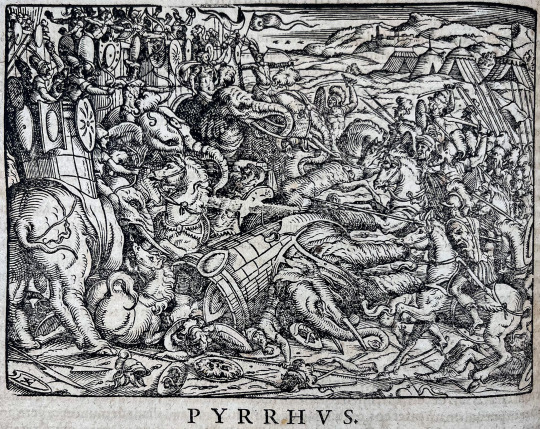
Battle between two armies, one on horseback and the other on war elephants. This generic illustration is repeated for Plutarch’s Life of Alexander (the Great) and Life of Pyrrhus (of Epirus). The former famously fought against forces that used elephants; the latter notably used them in battle.

As a change of pace from all the foregoing imagery of bloodshed and gore, we'd like to end with this elaborate woodcut of Aristotle seated at a table of scholars. Aristotle is not among the lives covered in the Bioi paralleloi, but this edition adds a brief biography of the philosopher by Guarino Veronese.
Images from: Plutarch. Vitae illustrium vivorum Graecorum et Romanorum. Frankfurt am Main: Sigmund Feyerabend, 1580. Catalog record: https://bit.ly/3DUnWhl
61 notes
·
View notes
Text

Xavier Thorpe had been obsessed with the award-winning teenage novelist Wednesday Addams since he was a student at Nevermore, losing himself in the macabre adventures of Viper de la Muerte to escape the loneliness of an absent father.
He had been to every signing and speaking engagement she ever hosted. He had the distinction of having the largest Viper de la Muerte collection; he owned every first edition, every collector’s edition, and every set in every language it was ever translated into, including braille.
Eventually as they got older, he made a name for himself as an illustrator, specializing in horror and murder mysteries while she continued to write hit after hit.
It was the highlight of his career when she chose him specifically to illustrate woodcut images for a celebratory special edition set.
He worked with her closely and tried his best to hide the fact he was obsessed with her, his heart soared when she remembered seeing him over the years and did not seem to mind his ardor.
The more he worked with her, the more he felt they understood each other.
When a critic had panned her latest novel as “gratuitously morbid” and suggested that she and all her fans seek psychiatric help, he couldn’t let that go unpunished.
When Wednesday came home to the critic’s heart ripped out and roses covered in blood, she gave him a rare smile.
They understood each other perfectly.
#Wenvier Moodboard#Wenvier#Wednesday Addams#Xavier Thorpe#Wednesday x Xavier#tw: blood#fanfiction inspo
22 notes
·
View notes